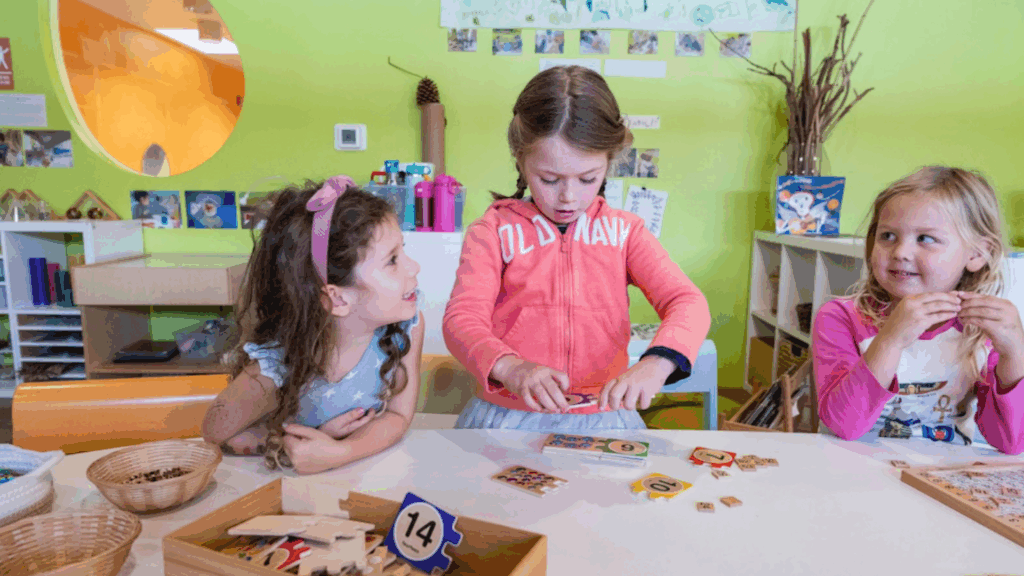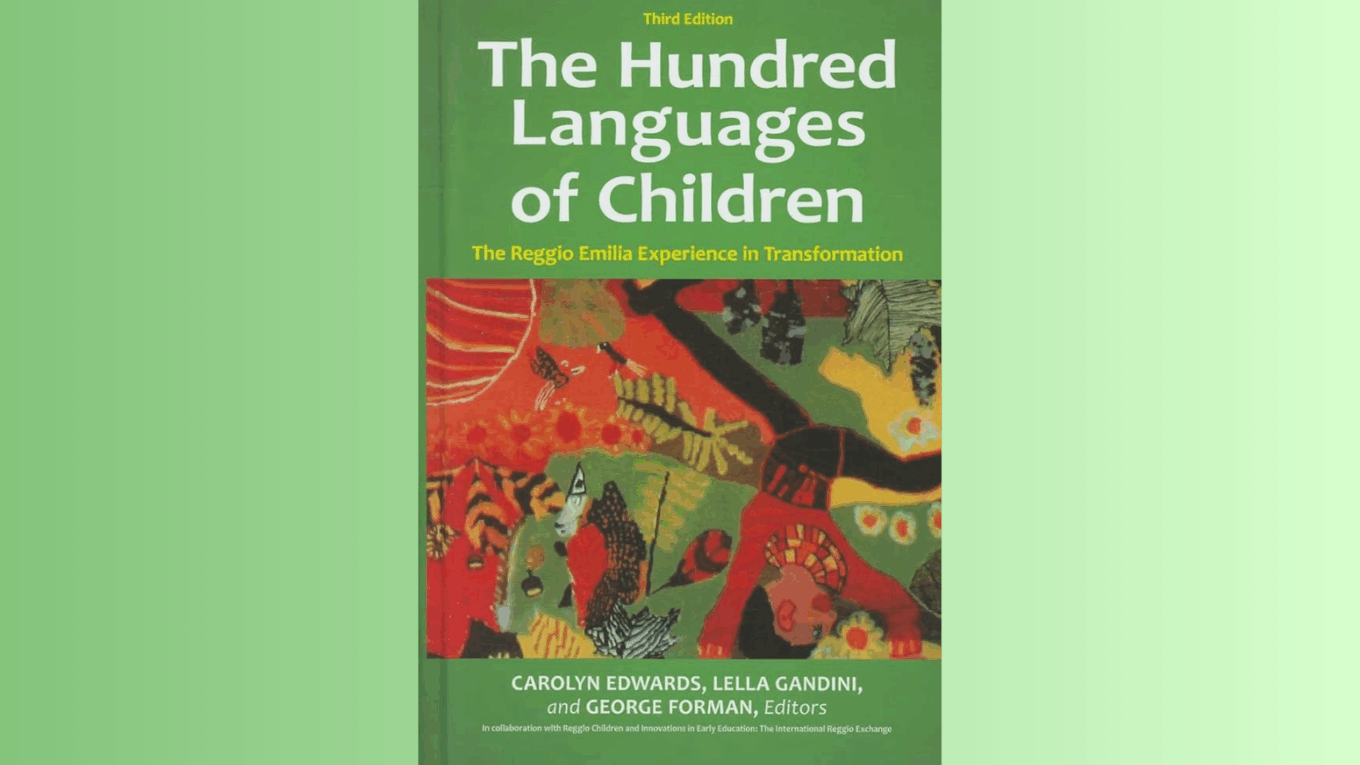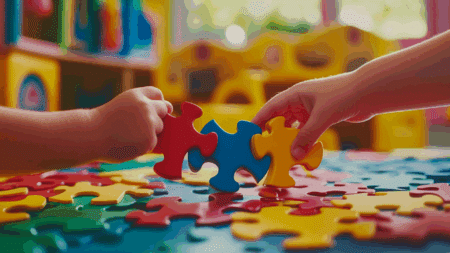If you’re like me, you’ve probably seen a child explain something without using any words, maybe through a drawing, a dance, or even a funny face.
That’s what the 100 Languages is all about. It’s a way of understanding how children express themselves in many forms, and how we, as adults, can support them by watching, listening, and responding.
In this blog, I’ll walk you through where this idea came from, what it means, how you can use it at home or in the classroom, and why it matters.
Let’s find and learn from the perspective of your child, through their eyes, hands, and heart.
What is the 100 Languages?
The “100 Languages” represents the endless forms children use to understand and engage with their surroundings.
These forms include artistic expression, imaginative play, physical movement, and subtle gestures. Every action reveals a layer of their thinking.
When a child lines up toy animals, hums a made-up tune, or builds something from blocks, they are communicating an idea. This approach invites adults to notice these signals and create environments that welcome every unique contribution.
Rather than narrowing learning down to a single method, the 100 Languages philosophy supports each child’s path of discovery and meaning-making.
Where it Came From: The Reggio Emilia Approach
This concept began in post-war Italy in a town called Reggio Emilia. Educator and psychologist Loris Malaguzzi collaborated with families to develop schools that valued children as active participants in their learning journeys.
Their vision was to create spaces that prioritized collaboration, imagination, and inquiry.
Malaguzzi believed education should be rooted in respect for children’s potential, and that expression in multiple forms should be central to how learning unfolds.
This vision became the Reggio Emilia approach, where children’s interests shape the learning path, and relationships among peers, teachers, and families are considered essential.
The 100 Languages Poem
This philosophy is beautifully expressed in a poem written by Loris Malaguzzi. Here’s the full text:
NO WAY. THE HUNDRED IS THERE
The child It
is made of one hundred.
The child has
a hundred languages
a hundred hands
a hundred thoughts
a hundred ways of thinking
of playing, of speaking.
A hundred always a hundred
ways of listening
of marveling at loving
a hundred joys
for singing and understanding
a hundred worlds
to discover
a hundred worlds
to invent
a hundred worlds
to dream.
The child has
a hundred languages
(and a hundred hundred hundred more)
But they steal ninety-nine.
The school and the culture
Separate the head from the body.
They tell the child:
to think without hands
to do without a head
to listen and not to speak
to understand without joy
to love and to marvel
only at Easter and Christmas.
They tell the child:
to discover the world already there
and of the hundred
They steal ninety-nine.
They tell the child:
That work and play
Reality and fantasy
science and imagination
sky and earth
reason and dream
are things
that do not belong together.
And thus they tell the child
That the hundred is not there.
The child says:
No way. The hundred is there.
What the Poem Means
The poem serves as a powerful reminder that learning occurs through doing, making, imagining, and feeling, rather than just through listening or speaking.
It urges us to stop dividing reality from imagination, and to honor children’s many ways of understanding the world.
Rather than narrowing children’s experiences, it asks us to celebrate their freedom to think and express in diverse, meaningful ways.
How to Support the 100 Languages

Children learn best when they are free to explore and express themselves in ways that feel natural to them. In the classroom, this means making room for play, art, sound, and movement.
For Toddlers (0–3)
Young children learn through sensory finding. Offer them materials that stimulate curiosity, textured fabrics, water, smooth stones, or musical shakers.
Observe how they explore with their fingers, eyes, and ears. Their focus on objects or gestures often reveals wonder or preference.
Give them unhurried time and space. Let them investigate the world by crawling toward light, splashing in water, or repeating an action that brings joy.
For Preschoolers (3–5)
This stage is rich with imagination and early storytelling. Children begin forming connections between ideas and actions.
Encourage them to retell events using drawings, puppets, or objects. Provide opportunities for collaborative play that allow each child to take on different roles.
Create moments for children to describe what they’re doing and why, without steering the outcome. Their choices offer insight into how they interpret the world.
For Early Elementary (5–7)
As abstract thinking grows, children often use combinations of visual, verbal, and symbolic methods to communicate.
Invite them to design, diagram, write, or sing ideas. Support both group and solo projects that allow for experimentation and iteration.
Offer them tools like tape, wire, charts, and storybooks so they can test and share new concepts with increasing independence and depth.
Tips for Teachers
Watch how each child approaches an activity. What tools do they choose? What patterns emerge? Resist the urge to correct unless safety is involved. Ask open-ended questions instead of giving directions.
Encourage children to revisit old ideas, as doing so helps strengthen reflection. Display their work with intention, letting the environment speak back to them.
Supporting at Home with Simple Moments
You don’t need special materials to support learning. Look to what’s already around you.
Set up spaces that invite finding, a corner with scarves and blocks, or a quiet nook with paper and crayons.
Let your child tinker in the kitchen, stack laundry, or explore shadows on the wall. Observe how they interact and ask them to share their thoughts as they play.
Even the way they arrange toys or hum a tune offers a window into their inner world.
Why It Matters
Encouraging diverse expression builds lifelong confidence and empathy. Children who feel seen are more likely to take risks, solve problems creatively, and collaborate with others.
By responding to their unique approaches to learning, we create environments that are inclusive, empowering, and joyful.
This isn’t just a philosophy for early education, it’s a mindset that honors individuality and cultivates lifelong learners.
Final Thoughts
The core of the 100 Languages approach is this: children make meaning through many channels, and all of them deserve to be heard.
Think about how your child shares their ideas. Join in and be present. Offer materials, time, and patience, and let their creativity guide the way.
This blog has given you ways to apply this mindset at home and in the classroom. You already have what you need: your trust, your attention, and your willingness to listen.
If this message speaks to you, I invite you to check my other writings on creative learning and child-led discovery. There’s so much more to find, together.




